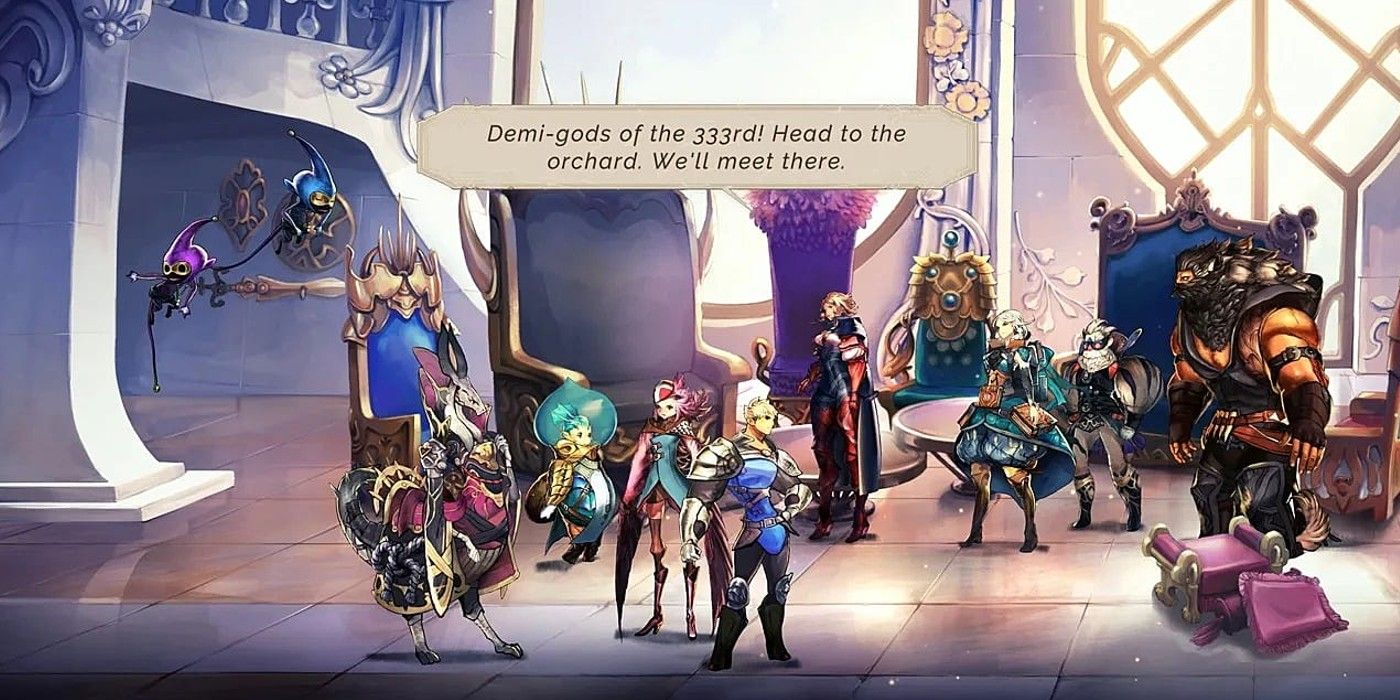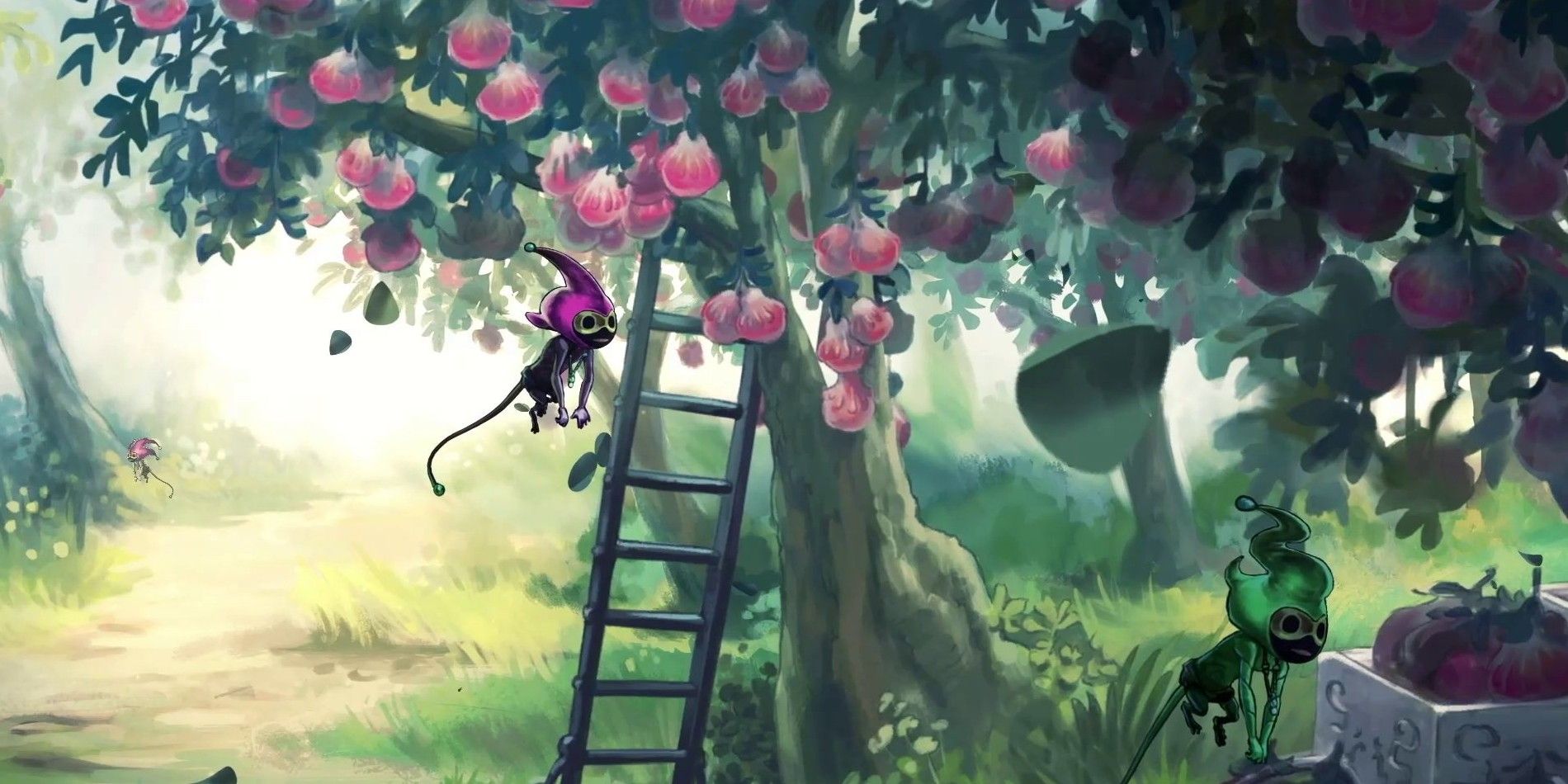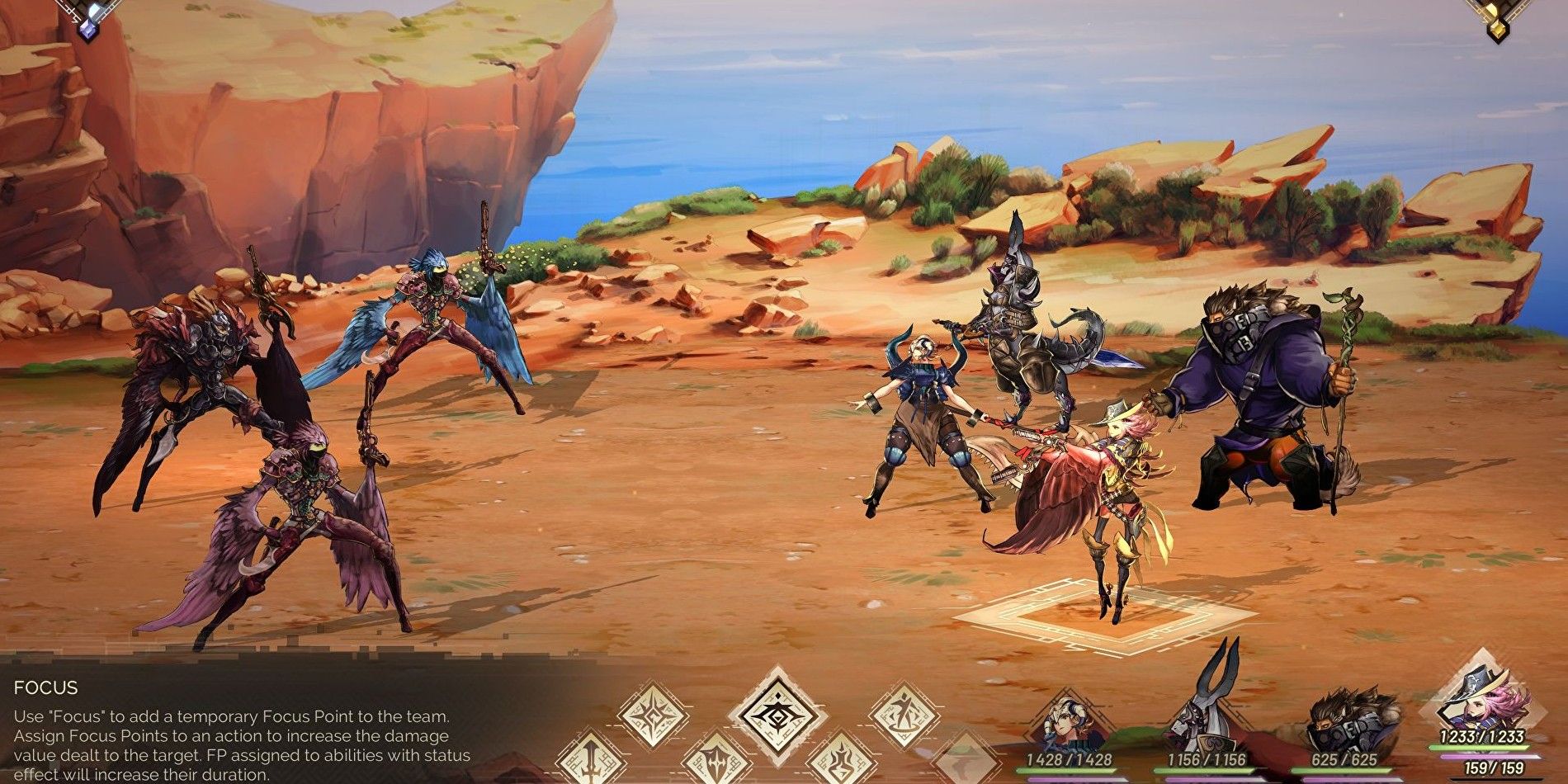Video games featuring high-resolution 2D graphics are rare in the current market, and turn-based RPGs are also more infrequent than their action RPG counterparts. This makes Astria Ascending a notable release for genre fans, but while the old-school look and gameplay elements may be divisive for some, the game’s heavy reliance on “fantasy racism” is undeniably a bigger flaw. Bigotry between fantasy races has been a long-held staple of the genre, but it is one that has worn out its welcome, as flagship products like Dungeons & Dragons have taken steps to move away from uncomfortable stereotypes and characterizations of fictional races. Astria Ascending exacerbates its problems by telling a story where harmony is the central theme while presenting heroes who are incapable of getting through a conversation without casual racist dialogue, and a world where peaceful co-existence is only possible due to magical fruit.
Lead designer for D&D Jeremy Crawford spoke of how the leading fantasy tabletop RPG changed its rules on race to remove set bonuses and penalties, noting they viewed those bonuses as representing “heroic archetypes” rather than inherent strengths or flaws of those races. The formative influences of the modern fantasy genre, such as Lord of the Rings, often included stereotypes associates with fantasy races and their cultures, which were subject to a number of interpretations. The grace and spirituality of the elves could also be perceived as aloofness and arrogance, to other races. The tenacity of the dwarves could be seen as admirable, or simply stubbornness. These races often perceived humans as short-sighted and destructive, which was perhaps the more relevant commentary, but much of fantasy genre fiction that followed leaned into the idea of fantasy race stereotypes.
The typical arc in stories like Lord of the Rings involves fantasy races beginning an adventure from a place of distrust and slowly coming to recognize the nobility of those of other fictional races as they band together to combat a mutual threat. Most modern, mainstream fantasy and science fiction genre works have recognized that fantasy racism is still racism, and stories that deal with such subject matter require care and nuance with how they handle these interactions. Astria Ascending is an intentional throwback to an older era of JRPGs in terms of gameplay, but its writing is a more meritless throwback to fantasy that lacks any kind of maturity or self-awareness in its handling of racial issues. This poor writing stands out more due to the context of the story, where the characters have no reason to be verbally sniping at each other based on racial stereotypes, as they are cast as champions of harmony who have already battled together for years.
Astria Ascending Bungles A Story About Harmony With Racist Characters
The simple theme of harmony vs dissonance is fine for a game that is a tribute to JRPG classics, but Astria Ascending bungles its own themes by making the champions of harmony people who are comfortable with casual racism. The story involves a world where heroes volunteer to become demi-gods, empowered with supernatural might in exchange for a shortened lifespan. The game begins with the full party already formed, the 333rd group of demi-gods to be given three years in which to defend the world of Orcanon, all of whom have three months left to live. This means the characters have already been living and fighting alongside each other for 33 months when the story starts, more than enough time for them to have gotten to know one another as individuals and to move beyond petty generalizations based on racial stereotypes. The demi-gods are champions of the concept of harmony, making the ongoing bigotry based on race inexcusable, and unnecessary.
Astria Ascending’s potential as a 2D Final Fantasy or Dragon Quest, after those series abandoned the 2D art style, gave it great promise, but its unrelenting and awkward racism are what hold it back from greatness more than any gameplay issues. Despite battling alongside one another for two years and nine months, with only three months left to live, the thief Arpajo still regularly mocks the scholar Eko, who is a Peysk - a diminutive race of fish-like humanoids who wear water-filled suits due to an inability to breathe air.
Eko does not play along; he is not depicted as being “in on the joke,” but expresses annoyance and frustration at Arpajo’s racist comments consistently. These are not the good-humored jokes of close friends, but mean-spirited, unwelcome bullying, based on Eko’s reactions. The jibes extend to other races, as there are japes that the bird-like Awisi might eat the Peyskan, despite both of them being sentient races purportedly united in harmony.
With graphics resembling Vanillaware titles like Dragon’s Crown, 2D exploration in the vein of Valkyrie Profile and Indivisible, and a turn-based battle system reminiscent of Bravely Default and its sequels, there is a lot to admire in Astria Ascending from a game design perspective. The absence of some quality of life features and its simplistic narrative would still alienate some fans, but the inclusion of so much unnecessary fantasy racism is the biggest flaw in the game. Beyond the heroes exhibiting spiteful and petty feelings towards each other’s races, the story itself handles the subject matter of race dubiously, at best. A fictional fruit called the “harmelon” is harvested and eaten by all races in order to foster harmony amongst them, and those who reject the harmelon are the forces of "dissonance." The heroes battle these "fruitless" champions of dissonance, but their dialogue amongst each other is often as dissonant as possible, marring the consistency of the story's themes.
Astria Ascending's Writing Shows Poor Judgment
Though increasingly realistic 3D graphics are the hallmark of most modern AAA video games, there is still a place for well-crafted 2D games like Metroid Dread. Astria Ascending’s beautifully animated characters and classic 2D exploration are among the game’s strengths, but it’s writing is one-dimensional, and there is no justification for that. The notion that a magical fruit is required for co-existence, instead of just being decent to each other, is already off-putting to begin with. The fact that demi-gods who have given up their lives to battle for harmony are spending their last months alive being bigots to each other puts it over the top, relying on lazy tropes and mean-spirited exchanges in place of real banter and camaraderie.
Genre-shaping authors like Michael Moorcock note that fantasy can provide a means to address real-world problems through the lens of the fiction, and that it can have weight beyond simple escapism. By telling a story where harmony between fantasy races is a central theme, Astria Ascending took on the burden of handling this subject matter with maturity and awareness of the time and place in which the story would be received. The awkward plot device of a harmony-inducing melon, combined with heroes of harmony who live as bigots, even in their final hours, would have been uncomfortable decades ago, but as a 2021 release, it shows inarguably poor judgment.



